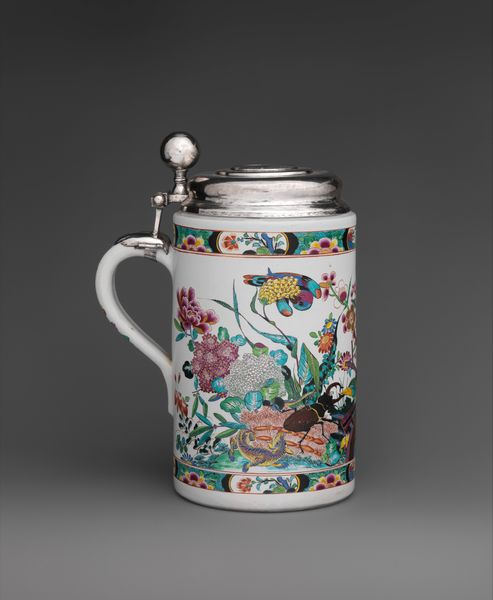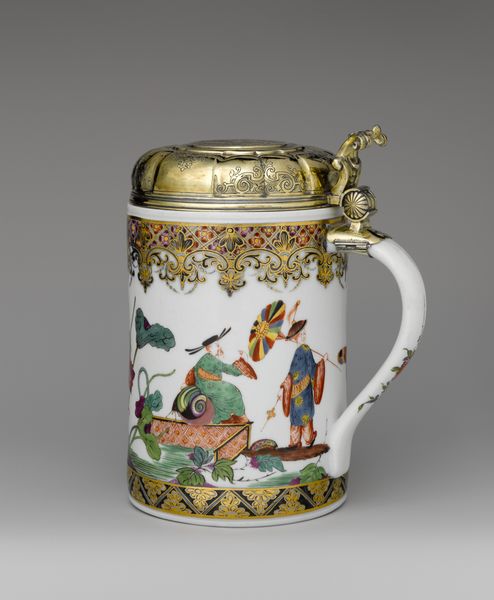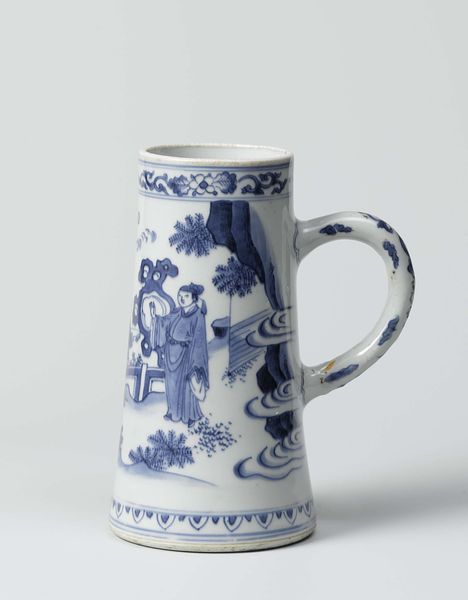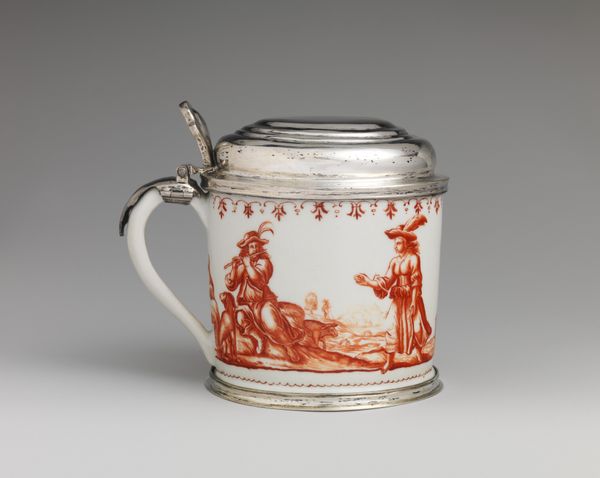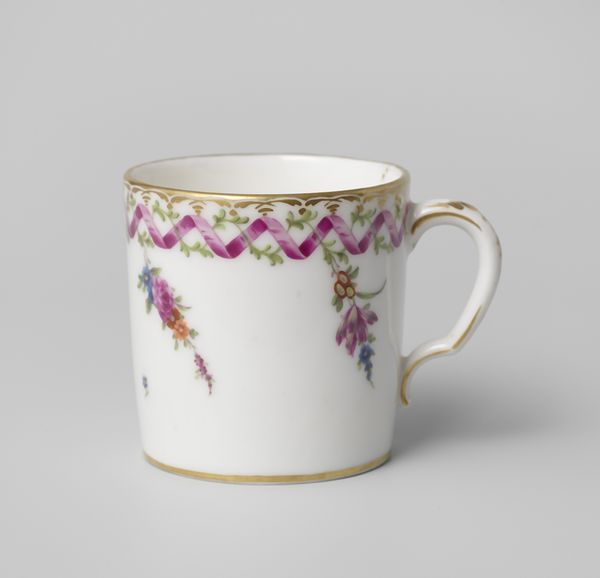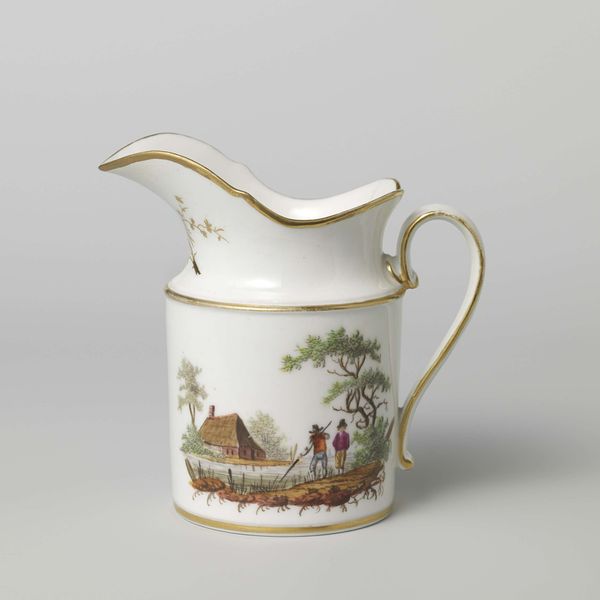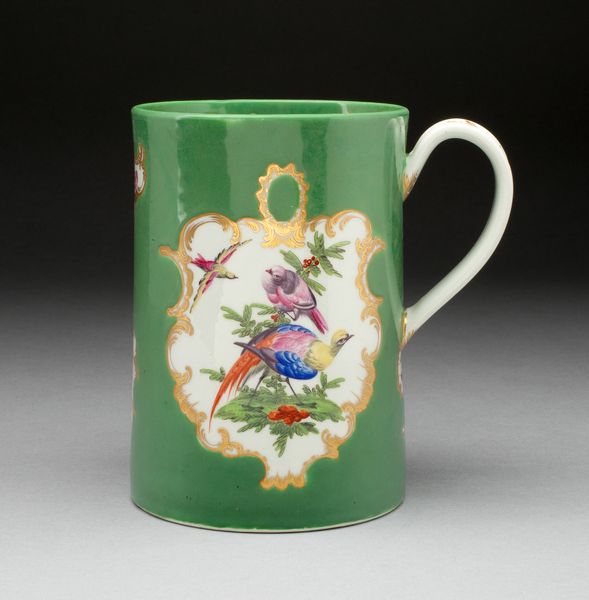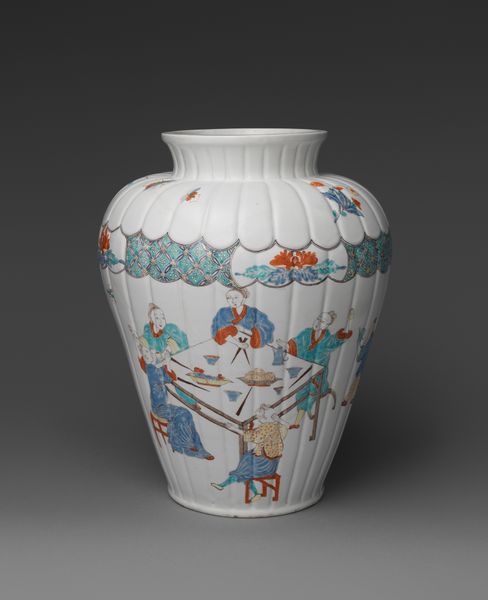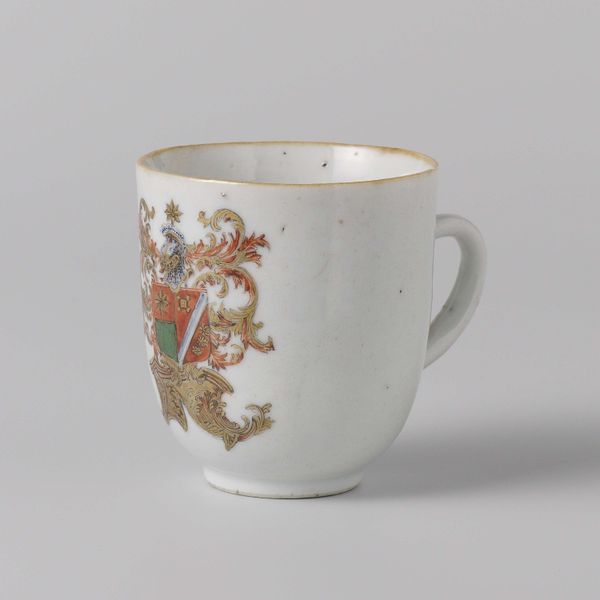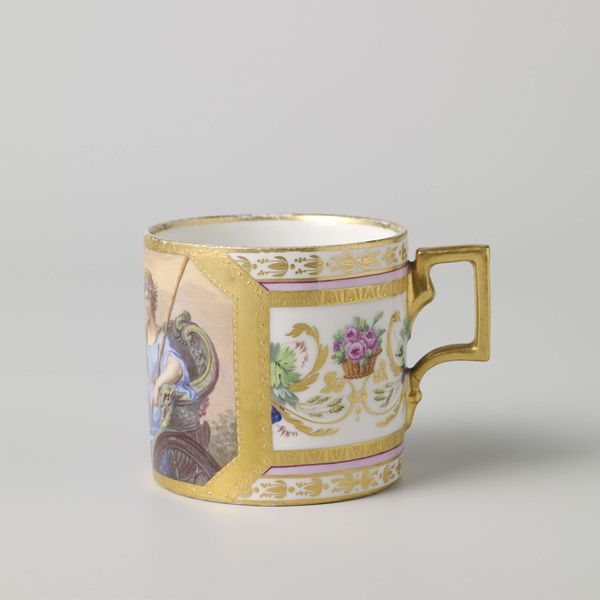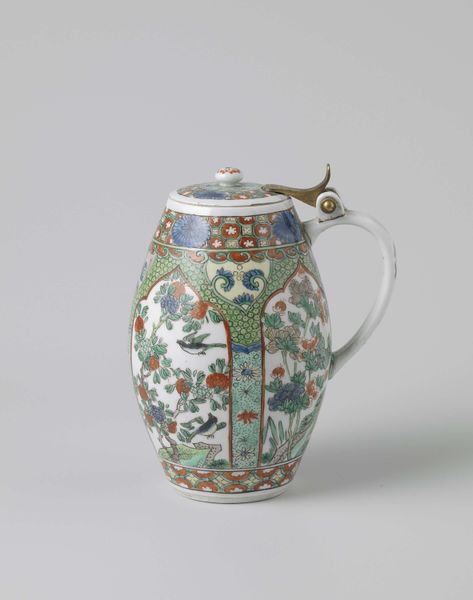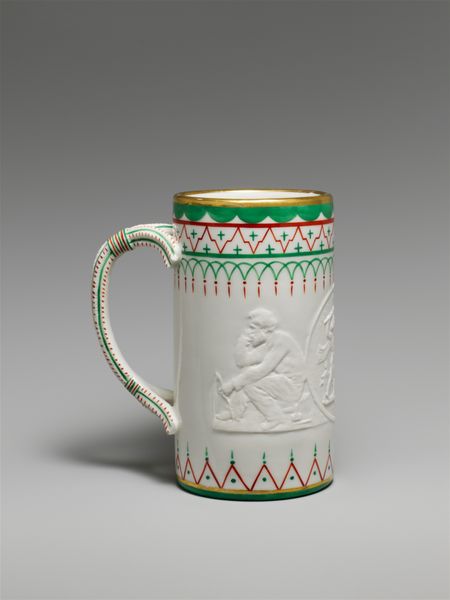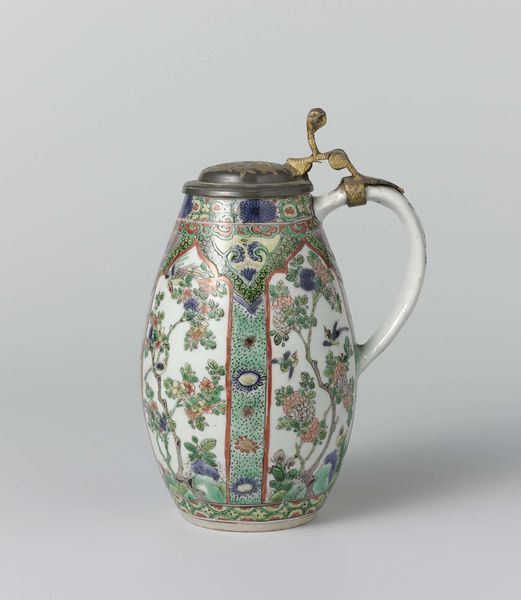
ceramic, sculpture
#
asian-art
#
landscape
#
ceramic
#
figuration
#
sculpture
#
decorative-art
Dimensions: Overall (confirmed): 7 1/8 × 6 × 4 3/16 in. (18.1 × 15.2 × 10.6 cm)
Copyright: Public Domain
Curator: Ah, here we have a tankard crafted by Adam Friedrich von Löwenfinck between 1731 and 1742, a striking example of ceramic sculpture, and presently housed at the Metropolitan Museum. Editor: Immediately, it feels almost like a dream. That pure white backdrop combined with those very deliberately placed figures... There's a lovely, simple serenity about it. A peaceful scene. Curator: Indeed. Notice the way Löwenfinck blends decorative arts with elements of Asian art? You can discern it from the figuration itself, the miniature landscape created, all hallmarks of its time and place. How the artistic memory of East meets West in this very tangible form. Editor: The colors too, it's delicate, but confident. Those shades feel really specific to something beyond mere recreation. The person leading the dog in this miniature play could be holding a bunch of flowers, right? But he could be offering comfort, direction. And who is being honoured here? A quiet revolution of gestures, you might even say. Curator: Precisely. Consider the context—this piece exists as both a functional object and as an exploration of intercultural dialogues happening during the 18th century. Each painted symbol—from the flowing robes to the natural settings—evokes a cultural narrative that enriches the viewing experience beyond pure aesthetics. It triggers our inherent fascination with stories from other cultures. Editor: Right. It also raises questions, at least for me, about craft. Something functional and decorative, but still full of intention? It brings forward the possibility of thoughtfulness in any part of creating that goes beyond the everyday object to something unique. It becomes not only something functional, but even beautiful. Curator: It echoes through time, doesn’t it? Demonstrating that artistry has consistently blurred the boundaries. Editor: Yes, it gives new weight to what a drinking vessel can mean or inspire. Curator: A compelling intersection of utility and evocative art, indeed. Editor: Yes. There's an argument that the simplest vessels can tell the biggest stories.
Comments
No comments
Be the first to comment and join the conversation on the ultimate creative platform.
